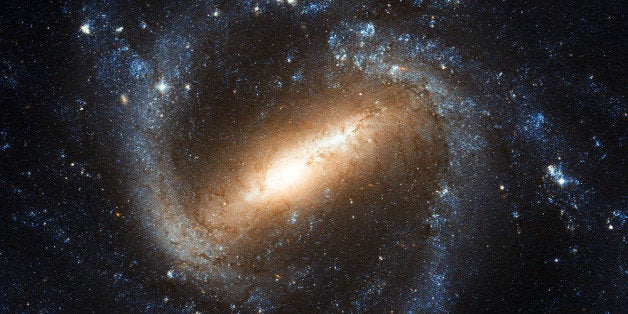
After the Laser Interferometer Gravitational-Wave Observatory, or LIGO, discovery was announced on Friday, I, like many other physicists, professors, students, and science lovers, was ecstatic. Hopeful that the results were achieving as much media attention as Trump's hair (or Bernie's, let's keep this nonpartisan), I clicked "share" on almost every article and video that I came across that day.
I was surprised that my friends were less than enthusiastic. I am a sixteen-year-old girl from rural Pennsylvania, which is not exactly the center of academia, so perhaps not shocking that my Facebook post of a Caltech video explaining the gravitational wave discovery, prefaced with my comment, "Yay! Absolutely incredible," was met with, "Jordy, ur so adorbs." Someone thought it was "adorbs" that I was passionate about science. Doesn't a discovery that confirmed Einstein's prediction of spacetime ripples deserve a little more than a comment that was "totes" just patronizing to me and ignorant of the meaning of my post?
After reading Lawrence M. Krauss's "Finding Beauty in the Darkness" in the New York Times, it struck me that the LIGO discovery, though important and awe-inspiring to all, is especially significant for teens my age. Krauss explains the science behind the discovery of gravitational waves, noting how the success of the incredibly precise LIGO experiment has made waves (yes, pun intended) in the field of physics. He also notes that it must also be acknowledged as a display of the "best about what it means to be human" and a window to answering the questions of "where we came from and how we got here" that have so plagued the curious human mind.
Though teens were likely not Krauss's intended audience, I think his message speaks even more to us than it does to adults. At its core, the triumph of LIGO over incredible odds (even Einstein didn't think humans could detect gravitational waves) is a demonstration of raw wonder and passion. The gravitational wave discovery was a clear example of something we often forget as fables and Disney cartoons fade from memory: our powers to create beauty and affect change are infinite. It's easy to feel defeated under constant fire of doubt and negativity as a teen, whether in school, at home, or in our heads. Hearing the sound of two massive black holes colliding over a billion light years away, though, is a reminder that these limits are figures of a pessimistic imagination.
At risk of losing credibility by using the hackneyed "we are the new generation" language of our parents and elders, I must note that here it has a valid point. Those qualities on which LIGO thrived must be the ones that define us, whether in our educational pursuits, creative work, or interactions with others. If we all take to heart the importance of gravitational waves in the larger setting of our lives, we can start to overcome the injustice and ignorance at the root of many of our current societal problems. Because in a world where we put no limits on our dreams, who is to say what we can't accomplish together?
We must all, science-loving adolescents or not, embody the spirit of LIGO in crafting a future of which we can all be proud, one that is ruled by tenacity and curiosity. Because really, what's more "adorbs" than that?
